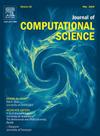TECNN: Identification of key nodes in complex networks based on transformer encoder and Convolutional Neural Network
IF 3.7
3区 计算机科学
Q2 COMPUTER SCIENCE, INTERDISCIPLINARY APPLICATIONS
引用次数: 0
Abstract
In complex networks, identifying key nodes is crucial for controlling information dissemination, optimizing resource allocation, and enhancing network robustness. Although many methods for identifying key nodes have been proposed, most deep learning-based approaches lack in-depth study of multi-hop neighbor relationships when constructing node features, often ignoring critical information and thus affecting identification accuracy. To address this issue, we propose a hybrid model based on the Transformer encoder and Convolutional Neural Network (TECNN) to better capture comprehensive information of nodes and predict their diffusion influence. Firstly, we use the neighborhood aggregation module to aggregate the 7-hop neighbor features of the nodes, obtaining a neighborhood matrix for the nodes. Next, the neighborhood matrix is fed into the Transformer encoder to capture the long-range dependencies between nodes, producing new node feature representations. These new node representations are then input into the Convolutional Neural Network, and the structural information of the nodes is further extracted through multilayer convolutional operations. Finally, a fully connected layer is used to predict the influence of the nodes. We perform comparative experiments by comparing the TECNN algorithm with four classical centrality algorithms and three state-of-the-art deep learning-based algorithms on 12 networks. The experimental results show that TECNN performs well in terms of ranking accuracy, discriminative ability, and top-10 node identification precision.
基于变压器编码器和卷积神经网络的复杂网络关键节点识别
在复杂网络中,关键节点识别对于控制信息传播、优化资源配置、增强网络鲁棒性至关重要。尽管已经提出了许多识别关键节点的方法,但大多数基于深度学习的方法在构建节点特征时缺乏对多跳邻居关系的深入研究,往往忽略了关键信息,从而影响了识别的准确性。为了解决这一问题,我们提出了一种基于Transformer编码器和卷积神经网络(TECNN)的混合模型,以更好地捕获节点的综合信息并预测其扩散影响。首先,利用邻域聚合模块对节点的7跳邻居特征进行聚合,得到节点的邻域矩阵;接下来,将邻域矩阵馈送到Transformer编码器中以捕获节点之间的远程依赖关系,从而产生新的节点特征表示。然后将这些新的节点表示输入到卷积神经网络中,并通过多层卷积操作进一步提取节点的结构信息。最后,利用全连通层来预测节点的影响。我们将TECNN算法与四种经典的中心性算法和三种最先进的基于深度学习的算法在12个网络上进行了对比实验。实验结果表明,TECNN在排序精度、判别能力和top-10节点识别精度方面都有较好的表现。
本文章由计算机程序翻译,如有差异,请以英文原文为准。
求助全文
约1分钟内获得全文
求助全文
来源期刊

Journal of Computational Science
COMPUTER SCIENCE, INTERDISCIPLINARY APPLICATIONS-COMPUTER SCIENCE, THEORY & METHODS
CiteScore
5.50
自引率
3.00%
发文量
227
审稿时长
41 days
期刊介绍:
Computational Science is a rapidly growing multi- and interdisciplinary field that uses advanced computing and data analysis to understand and solve complex problems. It has reached a level of predictive capability that now firmly complements the traditional pillars of experimentation and theory.
The recent advances in experimental techniques such as detectors, on-line sensor networks and high-resolution imaging techniques, have opened up new windows into physical and biological processes at many levels of detail. The resulting data explosion allows for detailed data driven modeling and simulation.
This new discipline in science combines computational thinking, modern computational methods, devices and collateral technologies to address problems far beyond the scope of traditional numerical methods.
Computational science typically unifies three distinct elements:
• Modeling, Algorithms and Simulations (e.g. numerical and non-numerical, discrete and continuous);
• Software developed to solve science (e.g., biological, physical, and social), engineering, medicine, and humanities problems;
• Computer and information science that develops and optimizes the advanced system hardware, software, networking, and data management components (e.g. problem solving environments).
 求助内容:
求助内容: 应助结果提醒方式:
应助结果提醒方式:


